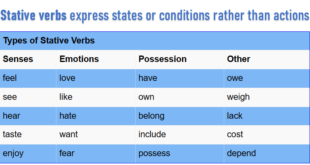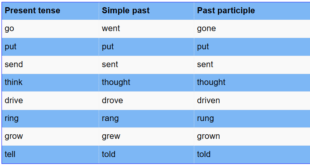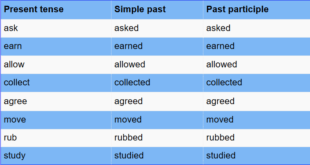![]()
We use the present simple tense to show a fact, habit, permanent situation, or fixed arrangement.
- Fact: Water boils at 100 degrees Celsius.
- Habit and routine: I wake up at six every morning.
- Permanent situation: I live in Paris.
- Fixed arrangement: The train leaves at 8:00.
In the present simple tense, if the subject is” he, she, or it,” we add “-s” to the verb:
- He speaks English.
- She works at a military hospital.
- The train arrives at 11 a.m.
If the subject is “I, you, we, or they,” we use a verb without “-s”:
- I walk to school.
- We go shopping.
- They drink coffee.
We make question form with “do” and negative form with “don’t”.
- I don’t walk to school.
- Do you like your new house?
- She doesn’t like lending her books.
The three different forms of the Present Simple Tense
| Affirmative | Question | Negative |
| I drink coffee. | Do I drink coffee? | I do not drink coffee. |
| You drink coffee. | Do you drink coffee? | You do not drink coffee. |
| He, She, or It drinks coffee. | Does He, She, or It drink coffee? | He, She, or It does not drink coffee. |
| We drink coffee. | Do we drink coffee? | We do not drink coffee. |
| They drink coffee. | Do they drink coffee? | They do not drink coffee. |
State verbs in the present simple tense
We use a state verb in present simple but do not use it in continuous form because it has a sense of continuity.
- ✓ I need a new car. ꭗ I am needing a new car.
- ✓ You can’t please him. ꭗ You can’t pleasing him.
- ✓ She seems nervous. ꭗ She is seeming nervous.
- ✓ It sounds great! ꭗ It sounding great!
- ✓ I have three children. ꭗ I am having three children.
- ✓ He loves his job. ꭗ He is loving his job.
- ✓ I agree with you. ꭗ I am agreeing with you.


